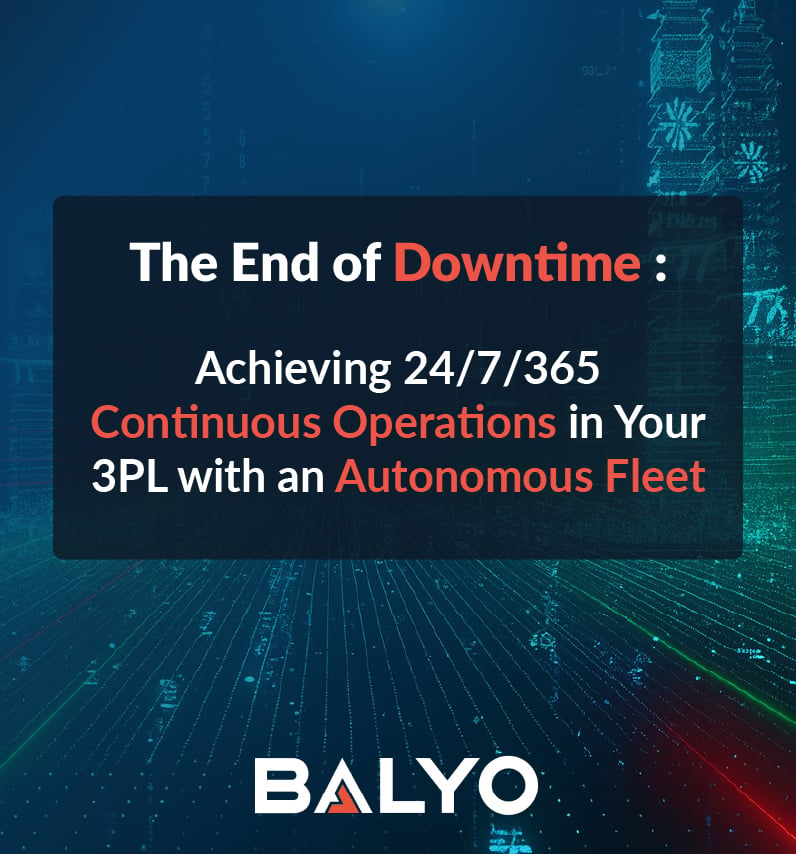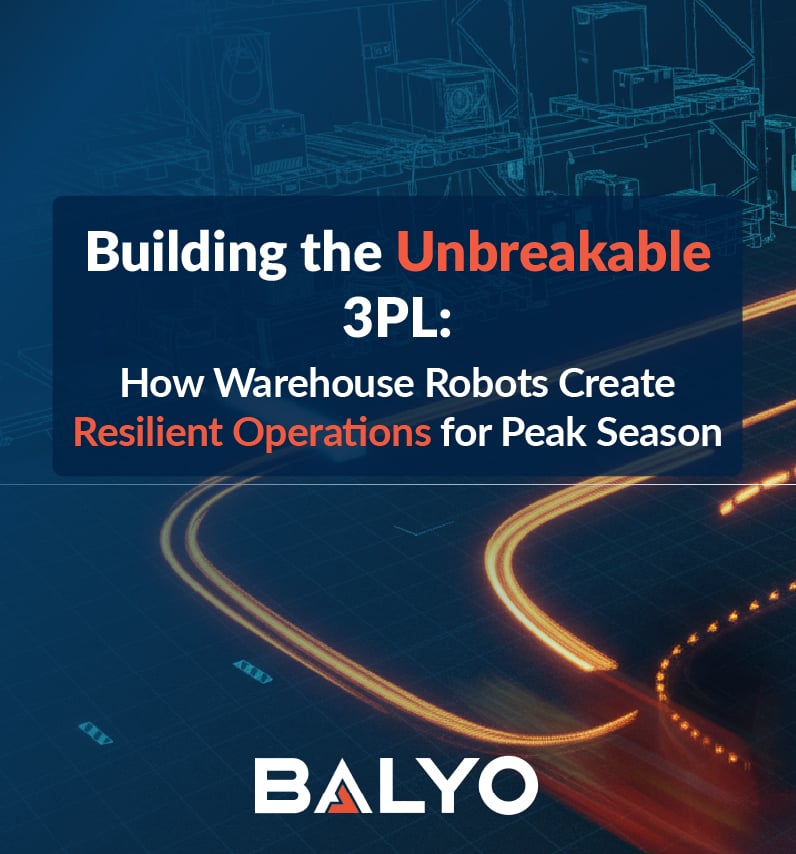.jpg?width=1100&name=Website%20Blog%20Articles%20(9).jpg)
In the fast-paced world of logistics and supply chain management, the warehouse still stands as the last bastion of automation resistance. With the relentless growth of e-commerce and ever-increasing consumer expectations for rapid delivery, warehouses are under immense pressure to become faster, more efficient, and more accurate. Until the start of the 2020s, the resistance to change was understandable. Automation for pallet handling was complex and required vast changes to the warehouse layout. As technology has improved, mobile automation has cleared the aisle for more flexible deployments, with technology that integrates seamlessly into the existing warehouse infrastructure. Fast, dependable, and unwaveringly flexible automation systems can now take on routine manual processes with relative ease and affordable cost. Automated warehouse systems are no longer a futuristic concept; they are a present-day reality, and at the forefront of this revolution are Automated Guided Vehicles (AGV) robots and Autonomous Mobile Robots (AMR).
As you can see in the BALYO Pallet POV video, these automated forklifts are reshaping the way goods are moved and managed within the four walls of the warehouse, from inbound to outbound and all pick-and-drop locations in between.
An automated warehouse system integrates various technologies to automate tasks that were previously performed manually. This can range from simple conveyor systems to complex, fully autonomous operations, as demonstrated in the video. One of the most significant advancements in this field is the widespread adoption of AGVs and AMRs. These automated warehouse robots are designed to transport materials and goods on pallets, dramatically reducing the reliance on manual labor for repetitive and physically demanding tasks. From the moment a pallet arrives at the inbound dock to the moment it's staged for outbound shipping, AGVs and AMRs are playing a crucial role in creating a seamless and efficient workflow.
The Inbound Journey: From Receiving to High and Low-Level Racking
The inbound process is the first critical step in the warehouse workflow. Traditionally, this has been a labor-intensive process involving manual unloading of trucks and transportation of pallets to storage locations. This manual handling is not only slow but also prone to errors and potential safety incidents. This is where the AGV forklift or autonomous forklift comes into play.
As you can see in the video, an AGV forklift, which is essentially a driverless forklift, is dispatched to pick up a pallet from the receiving dock. These vehicles navigate through the warehouse using laser guidance and vision systems. Once the AGV forklift has secured the pallet, it transports it to its designated location. The video showcases the AGV's ability to seamlessly interact with both low-level and high-level racking, demonstrating the versatility of modern automated systems. The result is a faster, more accurate putaway process, ensuring that goods are available for order fulfillment as quickly as possible.
Seamless Integration: The Conveyor to Rack Connection
In a truly automated warehouse, different systems work in harmony to create a continuous flow of goods. Conveyor systems are a common feature in modern warehouses, used to transport items over long distances. However, the end of a conveyor line can often become a bottleneck if there isn't an efficient way to move the goods to their next destination. This is another area where AGVs shine.
The video demonstrates how an AGV robot can be programmed to wait at the end of a conveyor line. When a pallet reaches the end, the AGV automatically picks it up and transports it to a storage location in the racks. This seamless handover between the conveyor and the AGV eliminates the need for manual intervention and keeps the flow of materials moving without interruption. This level of automation is a game-changer for high-volume operations. The supply chain benefits from this increased velocity, as it reduces the time goods spend in transit within the warehouse. The use of warehouse automation technology in this context not only improves efficiency but also enhances the overall reliability of the warehouse operation.
The Final Mile: From Racks to Outbound Staging
The outbound process, which involves picking orders and preparing them for shipment, is arguably the most critical and time-sensitive part of the warehouse workflow. Accuracy and speed are paramount, as any errors or delays can have a direct impact on customer satisfaction. As the video illustrates, autonomous warehouse robots are instrumental in optimizing this final leg of the journey.
When an order is received, the warehouse management system (WMS) identifies the location of the required goods. It then dispatches an AGV or AMR to the appropriate rack to retrieve the pallet. These automated warehouse robots, often in the form of an autonomous forklift, can navigate to the precise location, retrieve the pallet from either high or low-level racking, and transport it to the outbound staging area. Here, the pallet is prepared for loading onto a truck. This automated retrieval process is significantly faster, more accurate, and safer than manual picking. AMR robotics takes this a step further; with their ability to navigate dynamically, AMRs can find the most efficient route to the staging area, even in a busy and congested warehouse.
AGVs and AMRs: A Blurring Line of Automation
Historically, the distinction between AGVs and AMRs was quite clear. AGVs were known for following fixed, predetermined paths, often guided by magnetic tape, wires, or QR codes on the warehouse floor. They were the reliable workhorses for simple, repetitive, point-to-point transfers. AMRs, in contrast, were seen as the more intelligent and flexible option, using advanced technologies like LiDAR (Light Detection and Ranging) to create a map of their environment and navigate dynamically, maneuvering around obstacles with ease.
However, in today's rapidly evolving world of mobile automation, that line has become completely blurred. Modern AGVs have undergone a significant technological transformation. While they are still the preferred choice for handling heavier payloads, many now incorporate the very same sophisticated LiDAR technology and advanced safety sensors that were once the exclusive domain of AMRs.
This convergence of technology means that modern AGVs can now navigate with much greater flexibility and intelligence than their predecessors. They can operate safely alongside human workers and other equipment, and integrate more seamlessly into the complex and ever-changing environment of an automated warehouse. Essentially, the industry has combined the heavy-lifting strength of traditional AGVs with the intelligent navigation and safety features of AMRs. This creates a powerful, hybrid solution that offers the best of both worlds, further accelerating the journey towards a fully automated warehouse system.
The Future is Automated
The adoption of automated warehouse systems powered by AGVs and AMRs is no longer a question of 'if' but 'when'. The benefits are too significant to ignore: increased efficiency, improved accuracy, enhanced safety, and reduced labor costs. From inbound to outbound, these autonomous warehouse robots are streamlining every aspect of the warehouse workflow.
The journey of a pallet through an automated warehouse – from inbound to racks, from conveyors to racks, and finally to outbound staging, all of which you've seen in the video – is a testament to the power of automation. As technology continues to evolve, we can expect to see even more sophisticated AGV and AMR automation solutions emerge, creating the autonomous warehouse of the future. For any business looking to stay competitive in the modern marketplace, embracing the automated revolution is not just an option; it's a necessity.
Watch the full video here


